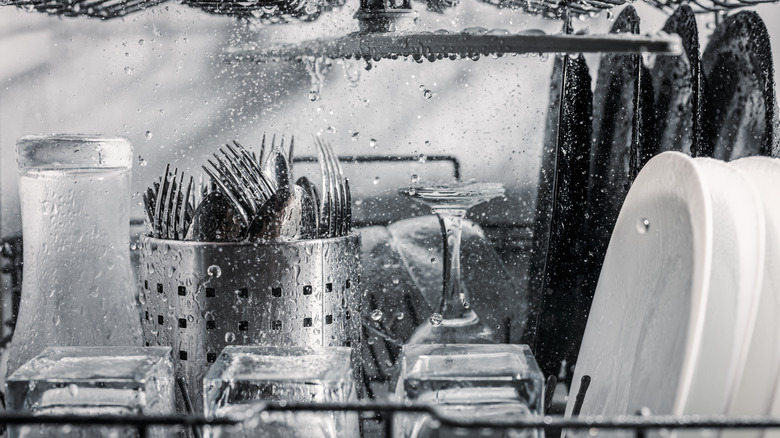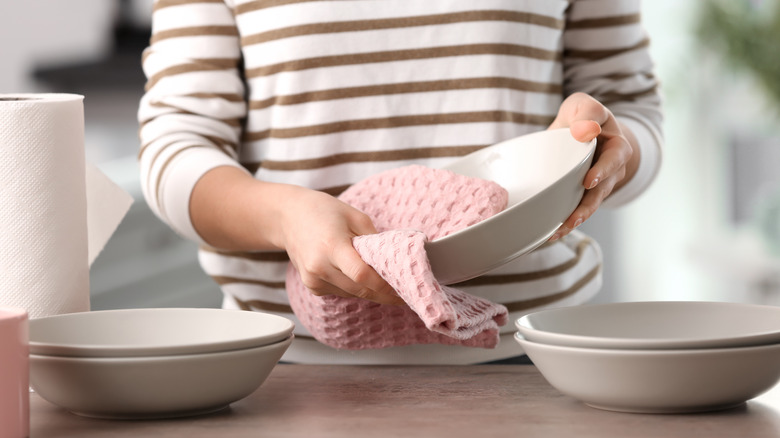The Reason Plastic Doesn't Dry As Well In The Dishwasher
Doing the dishes is hardly a job anyone considers a treat, and even when the dishwasher makes it easy for you, it can still be disheartening to open it up and see you need to redry half the dishes inside.
So why does it seem like our dishwashers slack off and leave our plastic cups, bowls, and plates damp and streaky? Turns out it's not entirely their fault. Compact Appliance explains that dishwashers dry dishes by increasing their internal heat, which then causes the leftover water to evaporate. Dishes made of materials like glass, ceramic, or metal are denser and conduct more heat, making the water droplets evaporate off them quicker, while thin, less conductive plastics cool faster and thus remain wet.
While this may be something that some extra engineering may be able to help resolve in the future, Reader's Digest notes that the standard load of dishes that most appliance manufacturers use to develop and test their dishwashers doesn't usually include plasticware, so the devices simply aren't made to handle the material.
How can I avoid this?
While you can't totally avoid your dishwasher-safe cups and Tupperware staying a bit drippy, there are some things you can do to help reduce the amount of hand-drying needed when it comes time to unload the dishwasher.
Consumer Reports recommends leaving space between all the dishes for improved airflow, increasing the temperature of the cycle if possible, and opening the dishwasher door slightly after the cycle has finished to let out excess steam and moisture. Compact Appliance also recommends skipping the quick cycle options and letting the machine run for its full wash and dry time, and using a rinse aid alongside your standard dishwasher detergent.
Rinse aids, including products like Jet Dry, are special chemicals that are dispersed through the machine to prevent water from beading on the dishes' surfaces, similar to a water repellant on a car's windshield.
Finally, the last practical way to keep non-plastic dishes dry is to empty the bottom shelf of your dishwasher first. Since most plastic dishes go on the top shelf — along with other cups that can catch water in concave bottoms — it's advisable to remove dishes from the bottom first so the puddled water doesn't drip or spill down onto them.
Maybe someday we'll all have dishwashers that are designed to actually accommodate the plastic dishes we love to use, but until that time take it easy on your machine when it doesn't get things 100% right. It's doing the best it can.

